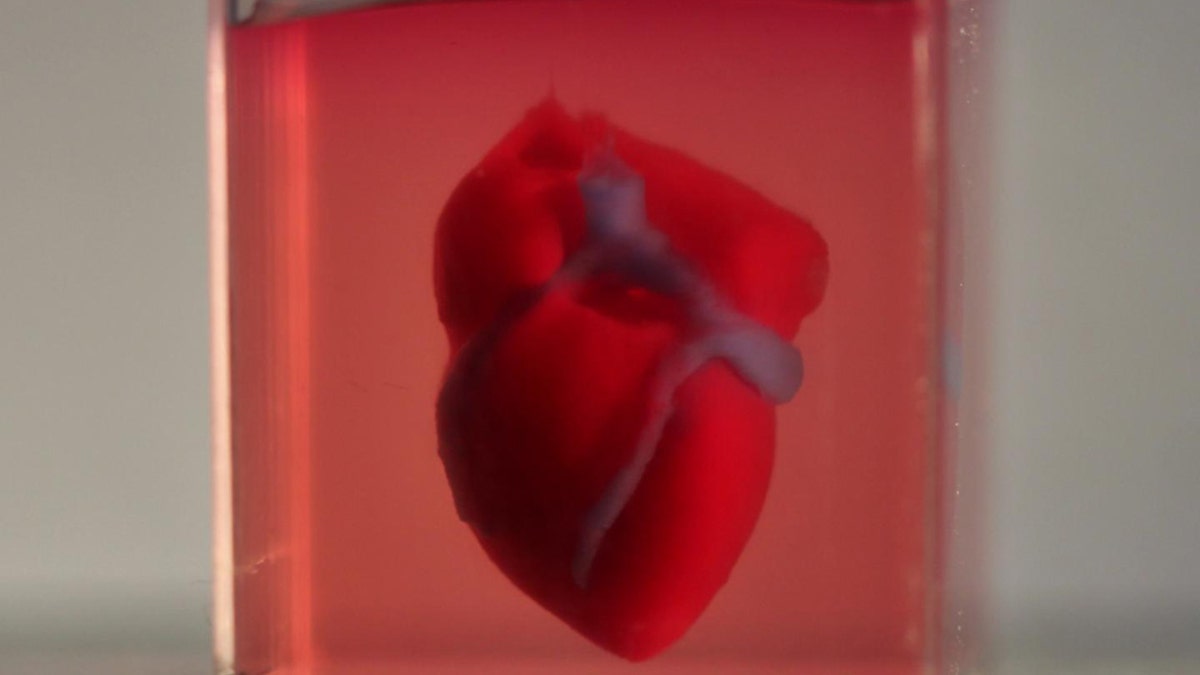Fox News Flash top headlines for April 16
Fox News Flash top headlines for April 16 are here. Check out what's clicking on Foxnews.com
For the first time in recorded history, scientists have created a working, vascularized engineered heart using human cells by printing it in 3D.
The advancement, which could change medicine forever, was unveiled in a study published in Advanced Science on Monday.
"This is the first time anyone anywhere has successfully engineered and printed an entire heart replete with cells, blood vessels, ventricles and chambers," said Tel Aviv University professor Tal Dvir in a statement.
Dvir continued: "This heart is made from human cells and patient-specific biological materials. In our process these materials serve as the bioinks, substances made of sugars and proteins that can be used for 3D printing of complex tissue models. People have managed to 3D-print the structure of a heart in the past, but not with cells or with blood vessels. Our results demonstrate the potential of our approach for engineering personalized tissue and organ replacement in the future."

A 3D-printed, small-scaled human heart engineered from the patient's own materials and cells. (Credit: Advanced Science. © 2019 The Authors.)
To create the 3-D printed heart, fatty tissue was taken from patients, which was separated into cellular and a-cellular materials. The cells were "reprogrammed to become pluripotent stem cells, the extracellular matrix (ECM), a three-dimensional network of extracellular macromolecules such as collagen and glycoproteins, were processed into a personalized hydrogel that served as the printing 'ink,'" according to the statement.
Once they were mixed with the hydrogel, they were separated to cardiac and endothelial cells to create patient-specific cardiac patches (a step Dvir says is "crucial") along with their own blood vessels.
"The biocompatibility of engineered materials is crucial to eliminating the risk of implant rejection, which jeopardizes the success of such treatments," Dvir added. "Ideally, the biomaterial should possess the same biochemical, mechanical and topographical properties of the patient's own tissues. Here, we can report a simple approach to 3D-printed thick, vascularized and perfusable cardiac tissues that completely match the immunological, cellular, biochemical and anatomical properties of the patient."
Although the heart was made with human cells and "and patient-specific biological materials," it's still too small to be used for an organ transplant, as it is only the size of a rabbit's heart, at just a few grams. For comparison purposes, the average size of an adult heart is between 250 and 350 grams and is often described as the size of a fist.
However, the potential for it to be enlarged is there, Dvir said, adding that "larger human hearts require the same technology."
TEEN USES 3-D PRINTING TO BUILD A NEW ARM FOR HIS VETERAN DAD
The study was inspired by the prevalence of heart disease in both Israel and the U.S. According to data compiled by the CDC, heart disease is the leading cause of death for men and women, accounting for the deaths of more than 600,000 people every year.
With further work, Dvir hopes that they can teach the heart to "behave" like hearts, including tasks such as pumping blood and having the valves worth together.
"The cells need to form a pumping ability; they can currently contract, but we need them to work together. Our hope is that we will succeed and prove our method's efficacy and usefulness," Dvir said. "Maybe, in ten years, there will be organ printers in the finest hospitals around the world, and these procedures will be conducted routinely."





















